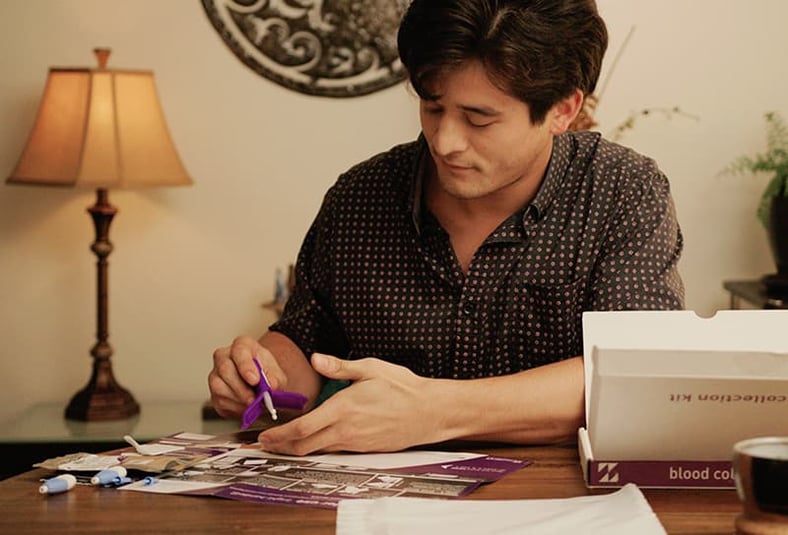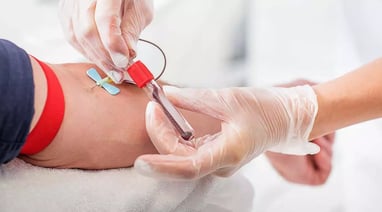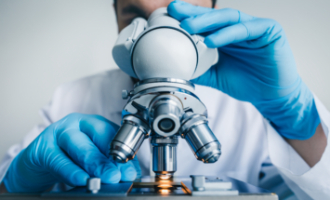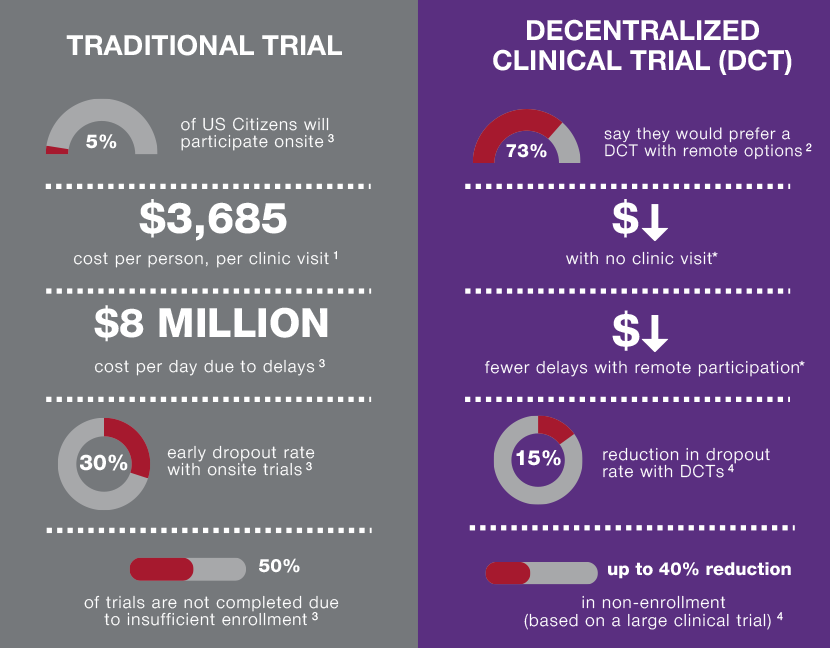Share this
how microsampling improves clinical research
by Neoteryx Microsampling on Mar 15, 2021 9:00:00 AM
Microsampling is a method used for blood collection that allows nearly anyone to collect tiny, “micro-sized,” blood samples for lab analysis. Microsampling is a suitable blood collection method for remote research studies or decentralized clinical trials. It has been gaining traction in the research field for several years but accelerated in 2020.
Remote microsampling surged as the Coronavirus Pandemic forced people to shelter at home and avoid onsite visits to crowded medical or research facilities. Since 2020, microsampling for remote blood collection has been on an upward trend and is poised to change the way we think about "having bloodwork done" for health care or research studies moving forward.

How does microsampling work?
Microsampling is a user-friendly process that relies on portable technology like DBS cards, or volumetric microsampling tools like the Mitra® device or hemaPEN® to enable remote sample collection. These devices can be used by researchers conducting field studies or by study participants at home to collect low-volume samples of blood from a simple finger-stick.
/lightbox-universal-all-componets-2.jpg?width=370&height=292&name=lightbox-universal-all-componets-2.jpg) Microsampling devices are included in sample collection kits that are sent to patients or clinical research participants by research coordinators. Device formats and kit components may vary slightly, depending on the type of study being conducted or the region it is in.
Microsampling devices are included in sample collection kits that are sent to patients or clinical research participants by research coordinators. Device formats and kit components may vary slightly, depending on the type of study being conducted or the region it is in.
The participant unpacks the device and sampling supplies, reads the instructions included with the kit, and self-collects small blood samples using a finger-stick method. A small lancet is provided to pierce the skin on a fingertip.
The study participant uses a Mitra device, which has an absorptive sponge tip, to collect a sample of blood by gently touching the device tip to the blood drop on the finger until it absorbs into the tip.
Following the instructions ensures the collected samples will furnish the precise volume needed by the research team to generate reliable data. The filled device can be repackaged in its foil specimen pouch and the provided envelope and mailed to the researchers for analysis.
Microsampling Drives Improvements in Clinical Research
Remote specimen collection and microsampling allow clinical studies to be run in an entirely new way. Some of the benefits it can bring include:
Convenience
Traditional clinical studies require participants to make dozens of onsite visits over the course of a single study, usually for blood draws and lab tests. Study volunteers often have to take time off work or school to attend each clinic or lab visit.
Remote sample collection makes it possible for people to participate in clinical trials from home, without disrupting their busy schedules. With portable and user-friendly Mitra devices, a self-guided blood sample collection procedure can performed at home or work. This approach is quicker and more convenient than a venous blood draw performed by a trained phlebotomist in a lab or clinic setting.
Not only do study volunteers greatly appreciate the convenience and flexibility of remote sampling, this approach also helps researchers recruit potential trial participants from a wider geographic area than was previously possible.
Comfort
Blood draws can be a daunting experience for many people. Some people are understandably frightened at the sight of a needle for a blood draw.
 This is especially true if their veins are small or hard to find, and if they’ve previously experienced a blood draw where the nurse or phlebotomist had to make several attempts to puncture a vein to draw blood.
This is especially true if their veins are small or hard to find, and if they’ve previously experienced a blood draw where the nurse or phlebotomist had to make several attempts to puncture a vein to draw blood.
Remote microsampling with the Mitra device or hemaPEN is done using a finger-stick method and doesn't involve big needles. It is minimally invasive, virtually painless, utilizes a tiny non-threatening lancet, and can be performed at home or in another familiar environment.
 When specimen sampling is so easy and convenient, it makes participation in a clinical trial much more feasible and comfortable for many people.
When specimen sampling is so easy and convenient, it makes participation in a clinical trial much more feasible and comfortable for many people.
Remote microsampling is likely to increase volunteer recruitment rates for clinical trials that contribute to vital medical research.
Cost Savings
Microsampling devices are relatively inexpensive and easy to use, and don’t require the assistance of a medical professional or a dedicated space for specimen collection. Once remote microsamples are received in the lab via mail, they can be analyzed using the standard lab equipment most institutions already have available. This eliminates the potential expense of acquiring new equipment.
When all these savings are added up, you can see that remote microsampling helps to reduce the overall budget for a research study or clinical trial.
For a visual comparison of how to reduce overall clinical trial costs by replacing conventional onsite blood sampling with remote microsampling, view our infographic on using microsampling in a Decentralized Clinical Trial. 
Improved Safety and Consistency
Because microsampling extracts a very small sample from the study participant, it is safer to use on young or particularly vulnerable populations and provides a more consistently useful sample volume.
A Mitra® microsampling device is based on VAMS® technology, which makes it easier for anyone to collect a precise volume of biofluid. Mitra devices are designed to make the sample collection process nearly foolproof, even in the hands of inexperienced users.
As long as study volunteers or their caregivers can read simple instructions and follow a set of diagrams or an online video, the blood sample can be easily collected properly and safely returned to researchers and labs for analysis.
No Cold-Shipping Required
Unlike traditional liquid sample processing, remote microsamples collected using Mitra devices do not require shipping in dry ice or refrigerated conditions. Microsamples can be sent via standard mail at ambient temperatures and will be analyzed as dried blood samples. This drastically simplifies the process and reduces associated costs as well.
After study participants collect their samples using one of the Mitra devices, they simply keep it inside its protective plastic case, repackage it in the included sealable pouch, and pop that inside a provided mailing envelope. They drop that in the nearest mailbox to send the microsample back to the laboratory via standard mail services.
Microsampling Makes Clinical Research Easier
Remote microsampling can provide enormous utility to researchers conducting clinical trials. This advanced yet simple sample collection method (especially when combined with remote telehealth communications via email, telephone calls, and video chats) streamlines the traditional clinical research process and makes participation far easier for volunteers.
Pharmaceutical companies can use this approach to run more effective clinical trials with greater efficiency and at a lower cost. Microsampling produces measurable and invaluable improvements in every aspect of the clinical research process.
Image Credits: Shutterstock, iStock, Trajan, Neoteryx
Share this
- Microsampling (206)
- Research, Remote Research (119)
- Venipuncture Alternative (105)
- Clinical Trials, Clinical Research (83)
- Mitra® Device (73)
- Therapeutic Drug Monitoring, TDM (51)
- Dried Blood Spot, DBS (39)
- Biomonitoring, Health, Wellness (30)
- Infectious Disease, Vaccines, COVID-19 (24)
- Blood Microsampling, Serology (23)
- Omics, Multi-Omics (21)
- Decentralized Clinical Trial (DCT) (20)
- Specimen Collection (18)
- Toxicology, Doping, Drug/Alcohol Monitoring, PEth (17)
- Skin Microsampling, Microbiopsy (14)
- hemaPEN® Device (13)
- Preclinical Research, Animal Studies (12)
- Pharmaceuticals, Drug Development (9)
- Harpera Device (7)
- Industry News, Microsampling News (5)
- Antibodies, MAbs (3)
- Company Press Release, Product Press Release (3)
- Environmental Toxins, Exposures (1)
- July 2025 (1)
- May 2025 (1)
- April 2025 (2)
- December 2024 (2)
- November 2024 (1)
- October 2024 (3)
- September 2024 (1)
- June 2024 (1)
- May 2024 (1)
- April 2024 (4)
- March 2024 (1)
- February 2024 (2)
- January 2024 (4)
- December 2023 (3)
- November 2023 (3)
- October 2023 (3)
- September 2023 (3)
- July 2023 (3)
- June 2023 (2)
- April 2023 (2)
- March 2023 (2)
- February 2023 (2)
- January 2023 (3)
- December 2022 (2)
- November 2022 (3)
- October 2022 (4)
- September 2022 (3)
- August 2022 (5)
- July 2022 (2)
- June 2022 (2)
- May 2022 (4)
- April 2022 (3)
- March 2022 (3)
- February 2022 (4)
- January 2022 (5)
- December 2021 (3)
- November 2021 (5)
- October 2021 (3)
- September 2021 (3)
- August 2021 (4)
- July 2021 (4)
- June 2021 (4)
- May 2021 (4)
- April 2021 (3)
- March 2021 (5)
- February 2021 (4)
- January 2021 (4)
- December 2020 (3)
- November 2020 (5)
- October 2020 (4)
- September 2020 (3)
- August 2020 (3)
- July 2020 (6)
- June 2020 (4)
- May 2020 (4)
- April 2020 (3)
- March 2020 (6)
- February 2020 (3)
- January 2020 (4)
- December 2019 (5)
- November 2019 (4)
- October 2019 (2)
- September 2019 (4)
- August 2019 (4)
- July 2019 (3)
- June 2019 (7)
- May 2019 (6)
- April 2019 (5)
- March 2019 (6)
- February 2019 (5)
- January 2019 (8)
- December 2018 (3)
- November 2018 (4)
- October 2018 (7)
- September 2018 (6)
- August 2018 (5)
- July 2018 (8)
- June 2018 (6)
- May 2018 (5)
- April 2018 (6)
- March 2018 (4)
- February 2018 (6)
- January 2018 (4)
- December 2017 (2)
- November 2017 (3)
- October 2017 (2)
- September 2017 (4)
- August 2017 (2)
- July 2017 (4)
- June 2017 (5)
- May 2017 (6)
- April 2017 (6)
- March 2017 (5)
- February 2017 (4)
- January 2017 (1)
- July 2016 (3)
- May 2016 (1)
- April 2016 (2)



No Comments Yet
Let us know what you think